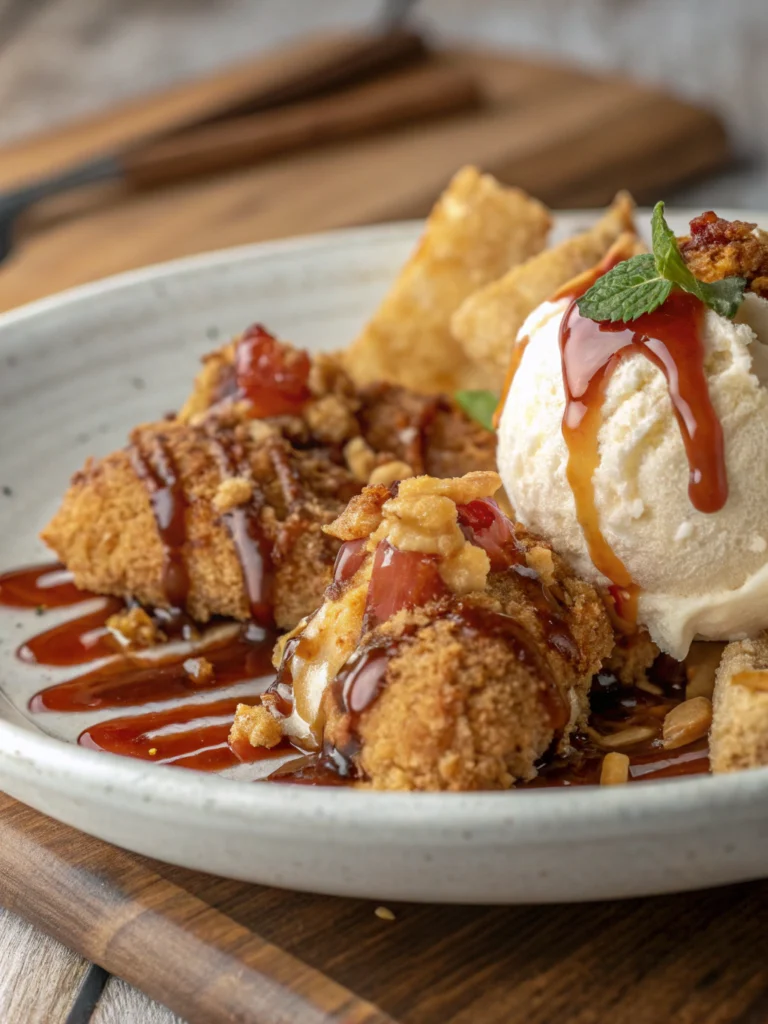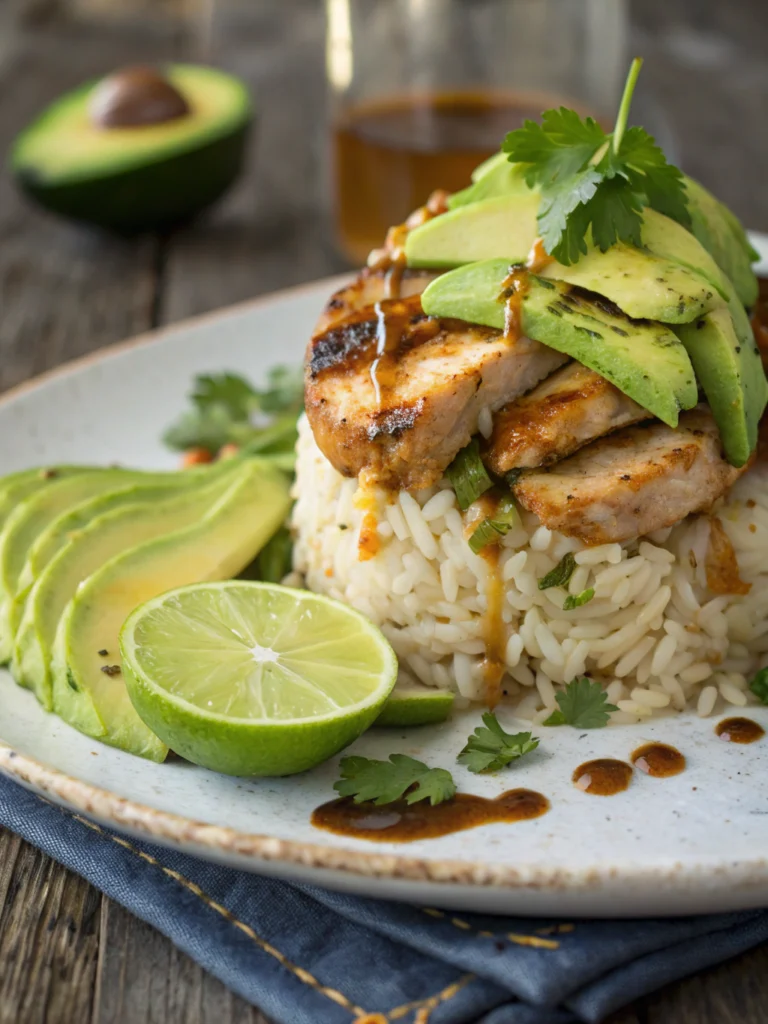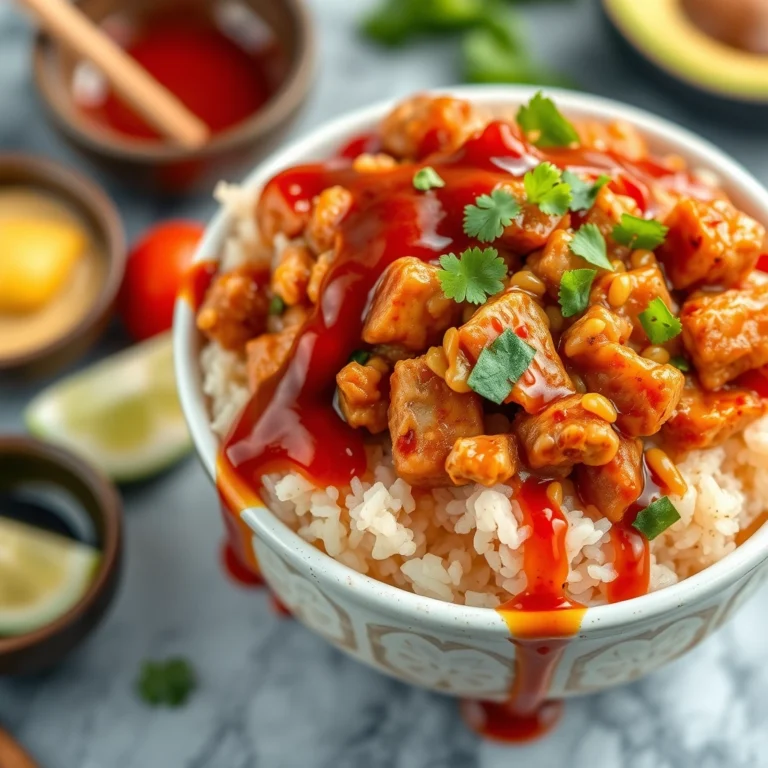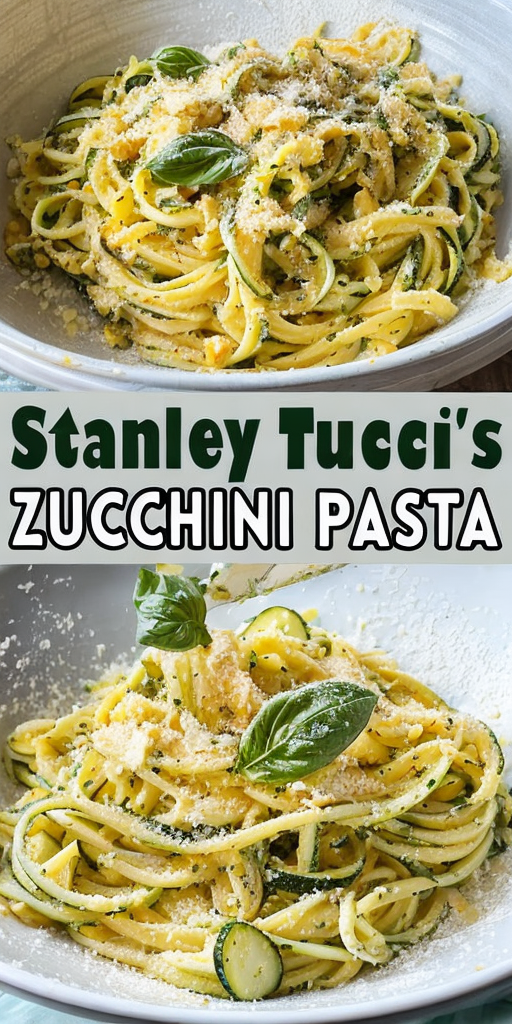Healthy Budget-Friendly Meal Ideas: Quick and Easy Recipes via PenRecipes
Quick and Delicious Healthy Stir-Fry: A Budget-Friendly Meal Idea!
Looking for quick, healthy, and budget-friendly meal ideas? You’re in the right place. Our Quick and Delicious Healthy Stir-Fry not only fits into any budget but also delivers on taste and nutrition. Imagine a plate full of vibrant colors, crunchy veggies, and savory flavors that dance in your mouth. This stir-fry is an explosion of taste that will satisfy your cravings, without feeling heavy or over-indulgent. It’s perfect for those weeknights when you need a fast yet wholesome dish that everyone will love.
The beauty of this dish lies in its versatility and simplicity. You can easily swap in whatever vegetables you have on hand, making it not only healthy and quick but also minimal on waste. We designed this recipe to be a no-fuss, all-in-one solution that serves as an excellent entrée for any occasion. Let’s dive into the highlights that make this recipe a household favorite, loved for its taste, ease, and economy.
Quick Recipe Highlights
- Flavor Profile: This stir-fry blends savory soy with a touch of spicy chili and a hint of garlic, balanced with the natural sweetness of fresh vegetables.
- Texture: Expect a satisfying crunch from the stir-fried veggies, perfectly complemented by tender morsels of protein.
- Aroma: Inviting fragrances of garlic and ginger fill the air, promising a delightful meal ahead.
- Visual Appeal: A vibrant medley of green, orange, and red, this dish is as pleasing to the eyes as it is to the taste buds.
- Skill Level Needed: Simple slicing and stir-frying are the key skills here, making it accessible to beginners and busy cooks alike.
- Special Equipment: A good wok or large skillet helps achieve the best results, though a regular pan will also work well.
Recipe Overview
- Difficulty Level: Rated easy because the recipe involves straightforward chopping and frying techniques with minimal risk of error.
- Category: This recipe falls into the quick dinner or lunch category, perfect for weeknight meals or meal prep.
- Cuisine: Inspired by Asian flavors, it adapts the classic stir-fry ethos with a modern twist.
- Cost: With most ingredients being pantry staples and vegetables, it’s friendly on the wallet.
- Season: Best enjoyed year-round as the ingredients are readily available in any season.
- Occasion: Suitable for casual family dinners, meal prepping for the week, or an easy lunch.
Why You’ll Love This Recipe
Our Quick and Delicious Healthy Stir-Fry excels in offering a taste that is bold and satisfying. The flavors are both comforting and exciting, making it a staple that you’ll love having on repeat. The combination of savory soy sauce, the heat of chili, and the aromatic garlic makes each bite delightful.
Convenience is a key highlight of this dish. It’s perfect for busy lifestyles where a quick, easy, and delightful meal is appreciated. With just a few minutes of preparation and cooking, any stress about dinner plans is off your plate – literally.
Nutritionally, this stir-fry packs a punch. It’s loaded with vitamin-rich vegetables and lean proteins, offering a balanced meal that supports your health goals. It’s an excellent way to ensure a variety of nutrients are part of your daily intake, without much hassle.
Socially and for entertaining, this dish works wonders. Its visual appeal and rich, inviting aroma make it an impressive yet entirely manageable dish to serve at casual gatherings or impromptu get-togethers.
Finally, in terms of cost-effectiveness, this meal checks all the boxes. Made mostly with affordable and readily available ingredients, it fits comfortably into any budget. It’s an opportunity to eat well without breaking the bank, making it ideal for students, families, and anyone mindful of their spending.
Historical Background and Cultural Significance
The origins of stir-fry date back thousands of years to China, when it was developed as a method to quickly cook available food over high heat. This technique not only preserved nutrients but also brought out intense flavors, making it a cherished cooking method in Chinese cuisine.
Over time, stir-frying became a staple in many Asian culinary traditions, transcending borders and adapting to local ingredients and tastes. This fusion of processes and flavors gave rise to variations that retained the heart of stir-fry—quick and nutritious meals—while exploring new tastes.
The recipe has evolved with global influences, adapting signature spices, sauces, and ingredients from different cultures. Its evolution furthered when it became popular in Western countries as part of a growing interest in healthy, fast cooking.
Various regions have since developed their unique approaches to this method, each adding signature spices or sauces that reflect their own culinary traditions and local ingredients. Whether you’re savoring a Thai basil stir-fry or a Korean bulgogi version, each takes on a distinctive yet familiar form.
Ingredient Deep Dive
Let’s explore the colorful bell pepper, a staple in our stir-fry. Known historically for its vibrant color and crisp texture, this vegetable not only adds an aesthetic appeal but also brings its sweet, tangy flavor to the dish, enhancing its overall taste profile.
Nutritionally, bell peppers are rich in vitamin C and a range of antioxidants, offering a boost to the immune system while being low in calories. Choosing the perfect pepper at the store involves selecting firm, glossy skins that are vivid in color, ensuring you get the best quality.
Storage is fairly simple; keep them in the refrigerator crisper to maintain freshness for up to a week. If you’re running low, substitutes like snow peas or zucchini can keep a similar texture while altering the taste profile subtly.
A fundamental base for many Asian dishes, soy sauce, is the umami-packed hero of this stir-fry. Its creation can be traced back to ancient China, and it has since become integral to flavor-building in Asian cooking.
Apart from its rich taste, soy sauce contributes to the dish’s mineral content, offering iron and potassium. Opt for low-sodium versions to better control salt levels in the recipe. Store in a cool pantry, away from direct sunlight, to preserve its flavors.
Should your pantry lack soy sauce, tamari or coconut aminos make decent substitutes, particularly for those seeking gluten-free options.
Common Mistakes to Avoid
- Overcrowding the pan: Avoid adding too many ingredients at once, as this can cause steaming instead of stir-frying, leading to soggy veggies.
- Skipping the prep: Have all ingredients chopped and ready before starting to stir-fry to prevent overcooking certain elements.
- Ignoring the pan heat: Ensure your pan is properly heated before adding ingredients to seal in flavors and achieve that delicious stir-fry char.
- Underseasoning: Be mindful to season gradually, tasting as you go, to achieve balanced and flavorful results.
- Overcooking vegetables: Aim for a quick cooking time to retain a slight crunch, preventing a mushy texture.
- Using the wrong oil: Choose oils with high smoke points, such as avocado or sesame oil, to maintain intended flavors without burning.
- Opting for pre-packaged veggies: While convenient, these can lose freshness and flavor, making fresh produce a better option for maximum taste.
- Neglecting to taste: Always taste as you go, adjusting seasonings according to your preferences and ensuring an optimal end result.
Essential Techniques
Mastering the precious art of stir-frying means appreciating the high heat involved in cooking rapidly. Maintaining this heat while stirring constantly ensures that each component is cooked evenly and swiftly, capturing the structure and essence of ingredients without losing flavor or nutrients.
Perfecting knife skills is essential, ensuring uniformity in vegetable cutting. This consistency helps each piece cook at an even rate, preventing a mishmash of overcooked and undercooked elements that disrupt the harmony of the dish.
Understanding sauce balance is crucial. Knowing how to orchestrate the flavors, from salty and savory to sweet and spicy, ensures that the dish is layered in taste without overpowering the natural flavors of the vegetables and proteins.
Pro Tips for Perfect Healthy Stir-Fry
– Preheat your wok or pan thoroughly before adding oil and ingredients; this step is crucial for achieving the correct sear and flavor.
– Keep vegetables consistent in size for even cooking and to maintain uniform tastes and textures throughout the dish.
– Incorporate low-sodium soy sauce to control salinity and ensure a well-balanced flavor profile.
– Fresh garlic and ginger provide the best aromatic foundation, enhancing the stir-fry’s overall fragrance and taste.
– Add a splash of sesame oil at the end of cooking for a nutty depth of flavor that enhances the umami.
– Garnish with green onions or sesame seeds for added texture and a gossamer layer of flavor.
– Experiment with a squeeze of lime for a zesty finish that lifts and brightens the dish.
– Serve immediately for the ultimate crispness and freshness, keeping the vibrant colors and crunch of the vegetables intact.
Variations and Adaptations
To explore a Thai-inspired variation, consider adding fresh basil and finely chopped lemongrass for an aromatic twist. This adaptation offers new lovely layers of fragrance and depth.
For a seasonal winter version, swap out typical vegetables for broccoli and carrots, pairing them with a warming ginger-garlic sauce that complements the season’s cooler instincts.
Dietary modifications are easy with this recipe. Go vegan by using tofu or tempeh as the protein source, incorporating vegetables like mushrooms or zucchini for added volume without meat.
For flavor experimentation, try incorporating hoisin or oyster sauce for extra layers of sweet and savory profiles, tailoring the recipe to preference or mood.
In changing texture, utilizing crunchy nuts such as cashews or almonds offers a delightful contrast to the soft stir-fried vegetables.
Enhance presentation with a scoop of jasmine rice or a sprinkle of red pepper flakes, bringing layers of texture and color that enrich the overall visual appeal.
Serving and Presentation Guide
Achieving the perfect plating technique can elevate a simple stir-fry. Consider serving over a bed of rice or quinoa to create contrasting textures, stacking the vegetables carefully to accentuate colors.
Garnishing with sesame seeds or chopped peanuts adds a pleasing crunch and can be visually striking. A sprig of cilantro delivers freshness and visual intrigue.
Traditionally, serving this dish with an accompaniment of steamed rice keeps authenticity, delivering sustenance and filling the meal’s profile.
For modern presentations, consider nesting in bowls and garnishing with fresh herbs, offering a trendy and approachable feel to the meal.
Temperature does matter in this setting; serve promptly to retain both the warmth and the crispness of the vegetables—key components to this dish’s enjoyment.
Mind portion control by measuring out serving sizes beforehand, ensuring each plate receives a balanced representation of all the stir-fry’s components.
Wine and Beverage Pairing
A vibrant white wine like a Sauvignon Blanc pairs well, offering light fruit flavors that align beautifully with the fresh elements of the dish.
Non-alcoholic alternatives include chilled green tea or sparkling water with a slice of lime to cleanse the palate while aligning with the culinary accents of the stir-fry.
For more robust flavors, a light-bodied Pinot Noir can complement the depth of soy sauce, while maintaining an overall harmonious balance.
Consider coffee or tea pairings; unsweetened iced tea provides a neutral flavor counterpoint, refreshing the palate between bites of the savory stir-fry.
Serve beverages chilled to maintain their refreshment filter, aligning neatly with the hot yet refreshing qualities of the dish.
Storage and Shelf Life
To store leftovers, allow the dish to cool fully before transferring to an airtight container. This ensures flavors are preserved without impacting the dish’s freshness or vitality.
Keep stored in the refrigerator for up to three days. Be vigilant about temperature control to prevent spoilage and maintain the flavor profile.
Opt for glass containers that seal airtight, retaining moisture levels and preventing cross-contamination with other foods.
Signs of spoilage include any tinges of sour smell or liquid separation—generic indicators the stir-fry has lost its prime.
Gently reheat in a pan over low to medium heat to preserve texture and flavors without compromising taste.
Should you wish to freeze, separate components like vegetables and meat where possible for better flavor retention upon reheating.
Make Ahead Strategies
Prepping in advance can make a significant difference to a busy schedule. Chop vegetables in the morning or the night before and store them in airtight containers, ready for quick assembly when needed.
When cooking in stages, partially cook proteins and store separately. Assemble these during the final frying stage for a fresher taste.
Quality impact is minimal when prepped correctly; always ensure ingredients are as fresh as possible when initially assembling.
Consider storing sauces separately to prevent sogginess, and add them freshly when the stir-fry stage is nearing conclusion.
Reheat only the tofu or proteins in advance; vegetables benefit from fresh cooking to avoid loss in texture and flavor.
Adding previously prepped fresh elements like green onions or bean sprouts ensures that freshness is maintained in the final creation.
Scaling Instructions
Should you wish to halve this recipe, simply adjust the quantities of ingredients proportionally, maintaining flavor intensity and balance without overwhelming or underrepresenting any one element.
Doubling or even tripling appreciates simple scaling nonetheless; just ensure larger cookware can maintain enough heat to replicate the original cooking process.
With additional equipment adjustments, such as using a larger wok or multiple pans, times can remain largely unchanged and suitable.
When scaling, consider storage solutions for extra portions, ensuring leftovers remain pristine and flavor-packed when reheated.
Vigilant timing adjustments safeguard texture; use personal judgment on specific ingredient doneness to retain edibility when output increases.
Nutritional Deep Dive
This recipe’s macronutrient balance impressively harmonizes carbohydrates, key for vitality, paired with adequate proteins, supporting muscle building.
Micronutrient analysis focuses on vitamins A and C, abundant in vegetables like bell pepper, promoting overall wellness and immunity.
Health benefits include antioxidant properties essential for combating free radicals and lowering risks for chronic ailments.
Consider dietary intake; this dish provides a holistic meal capable of satisfying without overburdening caloric intakes, ideal for balanced eating habits.
Conquer portion analysis by maintaining defined serving sizes, ensuring nutrients and flavors benefit each meal interval.
For weight management, enjoy within meal prep plans, accentuating taste and satiety without resorting to excessive eating.
Dietary Adaptations
For gluten-free enthusiasts, replace soy sauce with tamari or coconut aminos, maintaining the expected deep flavor with dietary considerations.
Those skipping dairy have an easily adaptable recipe, as traditionally, no dairy is involved, preserving all essences as intended.
Going vegan offers straightforward adaptations with protein subs such as crispy tofu garnishes, aligning meals to plant-based preferences.
Low-carb requirements are appeased, switching rice for shirataki or zoodles, manufacturing the stir-fry into a carb-lite delight.
Keto guidelines adhere smoothly with increased protein portions, balanced by high-fat augmentations via oil preferences.
Paleo disciples thrive on eliminating soy and substituting with primal sauces that reflect natural dietary commitments.
Low-FODMAP participation is facilitated by reductions in onion and garlic use, quickly replaced by timing out gentle herb use for maximum flavor.
The Recipe
Quick and Delicious Healthy Stir-Fry
Serves: 4
Prep Time: 10 mins
Cook Time: 15 mins
Total Time: 25 mins
Kitchen Equipment Needed
- Wok or large skillet
- Chef knife
- Cutting board
- Measuring spoons
- Serving spoon
Ingredients
- 2 tbsp sesame oil
- 1 lb chicken breast, thinly sliced
- 1 red bell pepper, julienned
- 1 yellow bell pepper, julienned
- 1 cup sugar snap peas
- 1 small onion, sliced
- 2 cloves garlic, minced
- 1 tbsp grated ginger
- 3 tbsp low-sodium soy sauce
- 1 tbsp chili sauce
- 1 tbsp rice vinegar
- Spring onions for garnish
- Sesame seeds for garnish
Directions
- Heat sesame oil in a wok over medium-high heat. Add sliced chicken, cooking until golden and cooked through. Remove and set aside.
- In the same wok, add bell peppers, sugar snap peas, and onion. Stir-fry for 3-4 minutes until vegetables are tender yet crisp.
- Add garlic and ginger to the vegetables, cooking for another minute until fragrant.
- Return the cooked chicken to the wok. Mix in soy sauce, chili sauce, and rice vinegar, stirring well to evenly coat all ingredients.
- Cook for an additional 2 minutes, then remove from heat.
- Garnish with sliced spring onions and sesame seeds before serving hot.
Recipe Notes
- Substitute chicken with tofu for a vegetarian version.
- Adjust the amount of chili sauce to match your spice preference.
- Use any combination of vegetables according to seasonality or availability.
Troubleshooting Guide
– If your stir-fry becomes soggy, reduce the amount of vegetables cooked at one time to maintain high heat throughout the cooking process.
– Balance overly salty flavors by adding a splash of rice vinegar or juice from half a lime, which helps counter saltiness effectively.
– Encountering inconsistency in vegetable textures? Prioritize harder vegetables at the frying start and soft ones towards the end to align cooking times.
– Equipment limitations can be overcome by cooking proteins and vegetables separately, combining them at the end for an evenly cooked mix.
– Adjust flavors and ingredients with available substitutes, ensuring favorite elements are maintained regardless of restrictions.
– Timing issues involve watching visible signs of doneness, allowing visual indicators to guide and prevent overcooking.
Recipe Success Stories
Join countless enthusiasts who adored this recipe as a go-to on busy nights. Our community has shared profile after profile of vivid, positive experiences, highlighting how flexible and rewarding this recipe has become.
Countless variations were explored—the addition of unique spices, shifts in veggies, and experimental proteins resulted in pictures that told vibrant stories filled with culinary excitement.
Adaptations have ranged from regional ingredient swaps to cultural spice blends, reflecting diverse tastes and imaginative compositions.
Readers have contributed numerous suggestions like adding nuts for crunch and suggestive garnishes, engaging users into an incredible variety of personalized accounts.
Our engaged audience frequently shares their photography tips for capturing the recipe’s brilliant colors and textures, with feedback often leading to even better outcomes.
Frequently Asked Questions
Yes, frozen vegetables can be an excellent substitute when fresh isn’t available. Just be sure to thaw and drain excess water to avoid sogginess.
Can I substitute chicken with seafood?
Absolutely, shrimp and scallops work well in this recipe, allowing a different protein angle while enhancing the stir-fry’s naturally light and flavorful makeup.
What oil works best for high-heat frying?
Oils with high smoke points like canola, grapeseed, or avocado oil are ideal as they sustain high temperatures without breaking down, maintaining flavors.
Can I make this dish spicier?
Increase the amount of chili sauce or add freshly sliced chilies with seeds for more heat, customizing to personal heat tolerance and desired spice levels.
Can I prepare this stir-fry without a wok?
A large skillet will still achieve similar results though the wok’s shape aids in uniform cooking, leaving ample space to stir ingredients without spillage.
What’s the best starch to serve alongside?
Jasmine or brown rice compliments well, while quinoa and noodles offer variant options, maintaining nutrition balance while giving taste and texture diversity.
Can this recipe be meal-prepped in advance?
Yes, prepare components separately, storing proteins and veggies apart to ensure maximum freshness and texture when reheated just before serving.
Is there a gluten-free alternative to soy sauce?
Opt for tamari or coconut aminos—both provide a gluten-free solution with the umami flavors intact, suitable for gluten-sensitive guests or diners.
Can I make this recipe without garlic?
Certainly. Swap the garlic with an equal measure of finely chopped shallots or garlic-flavored olive oil, maintaining flavor without direct garlic inclusion.
Could I use a non-stick pan?
A non-stick pan will work if suitable for high heat. Ensure the pan’s surface isn’t compromised, and lower heat slightly if needed to avoid deterioration.
Additional Resources
Explore our other healthy quick meal recipes like our Veggie-Filled Fried Rice or Teriyaki Quinoa Bowl that follow this dish’s obtainable yet flavorful style.
Mastering stir-fry techniques means exploring variations across meats and sauces, appreciating base compositions before building from basic expertise to stylish complexities.
Explore our ingredient library, detailing preferences and ensuring pathways to maintain highest quality produce and proteins where availability fluctuates.
Our equipment guide includes recommendations for everyday cooking tools, ensuring successful preparation and inspiration for enjoyable culinary quests.
Seasonal influences embrace weather and ingredient abundance—learn to adapt stir-fries with colorful flair and the produce calendar’s availability influencing flavors.
Join the Conversation
We love when our community shares their photos and taste experiences on social media, providing inspiration for those embarking on their culinary explorations.
Encourage sharing tips and tricks that have worked for you in making this dish shine uniquely, drawing engagement from our plethora of eager recipe followers.
Rate reviewed recipes and share how this stir-fry served your nights, offering insights into variations and amendments that complement feedback-enhanced creations.
Engage in our fandom, showcasing DIY hacks and writings on stunning home-cooked presentations loved ones will appreciate, lighting up family meal sessions.
Explore a world where customization meets personal preferences, inspiring others to pursue your footsteps while building an enhanced connection through food.







